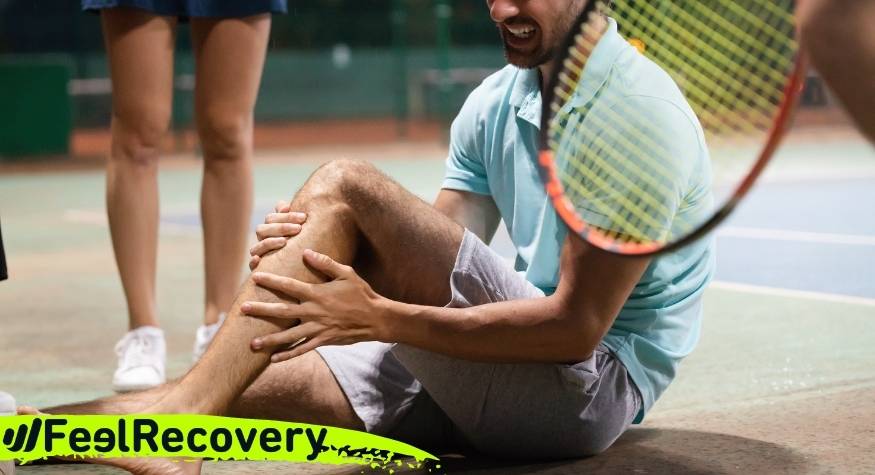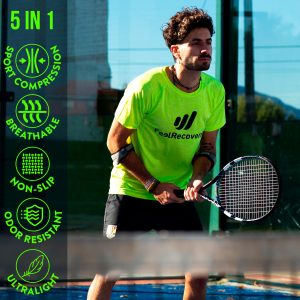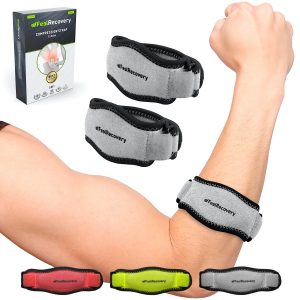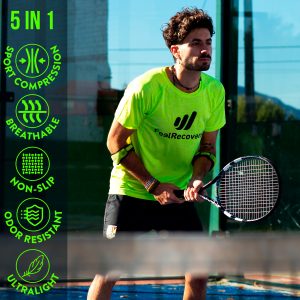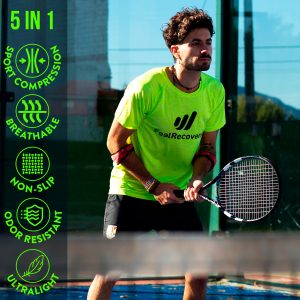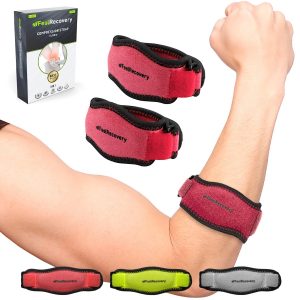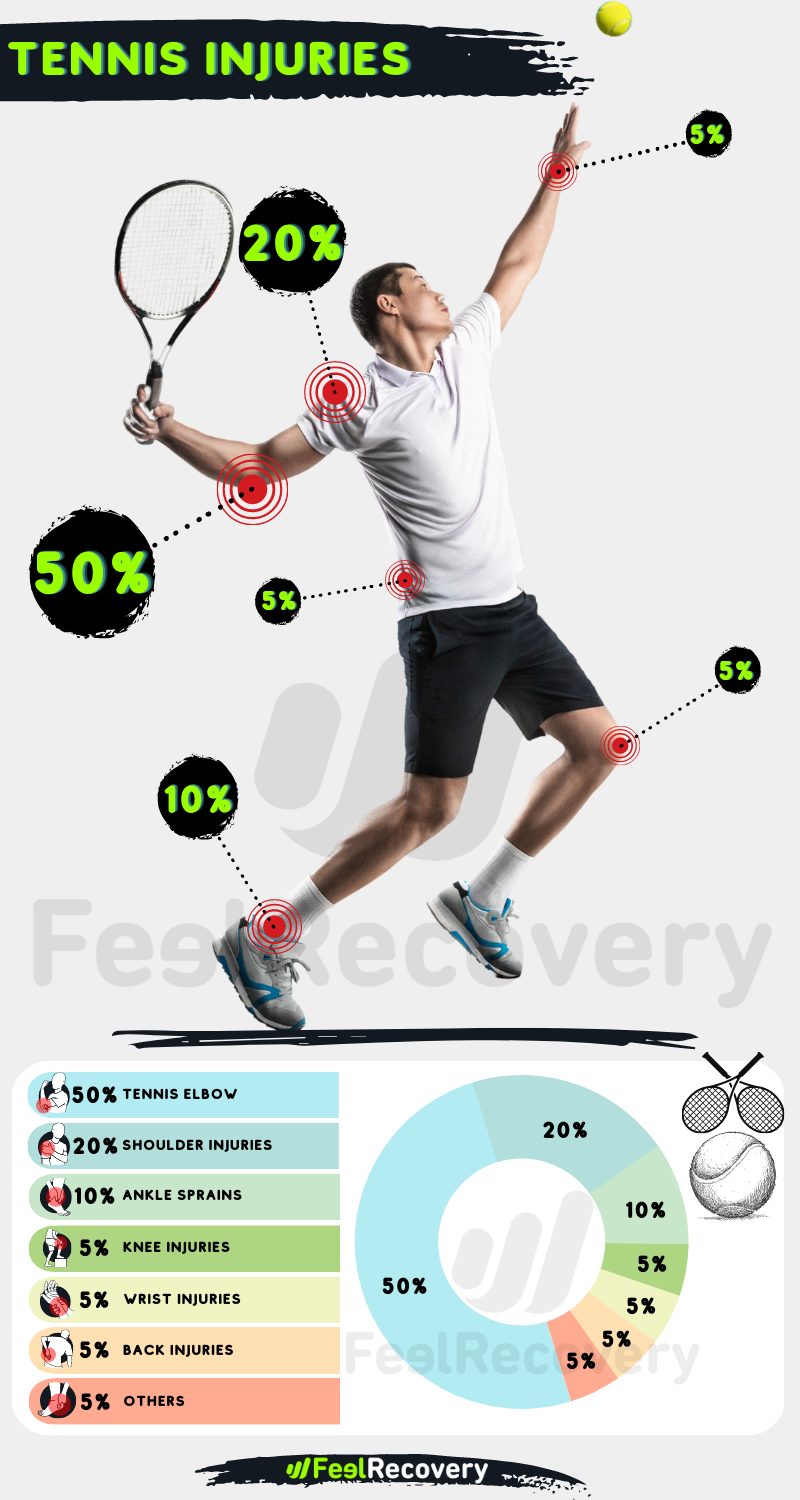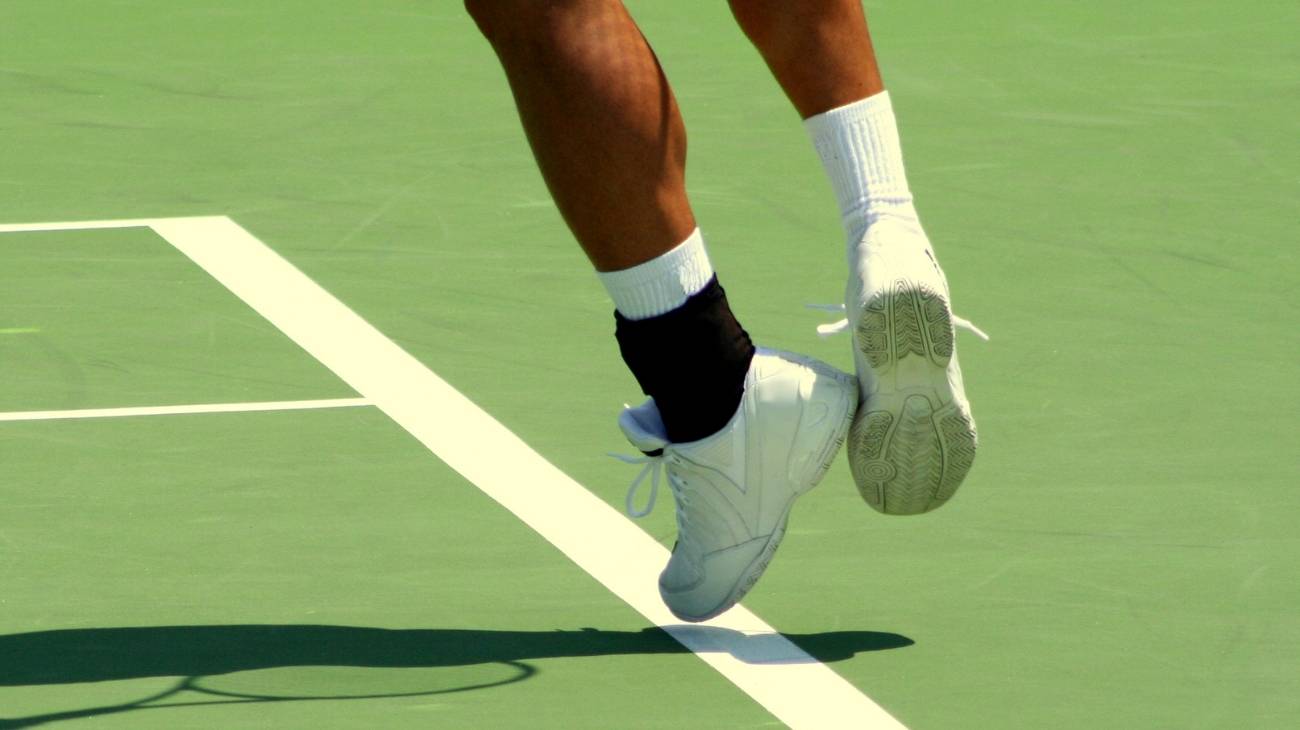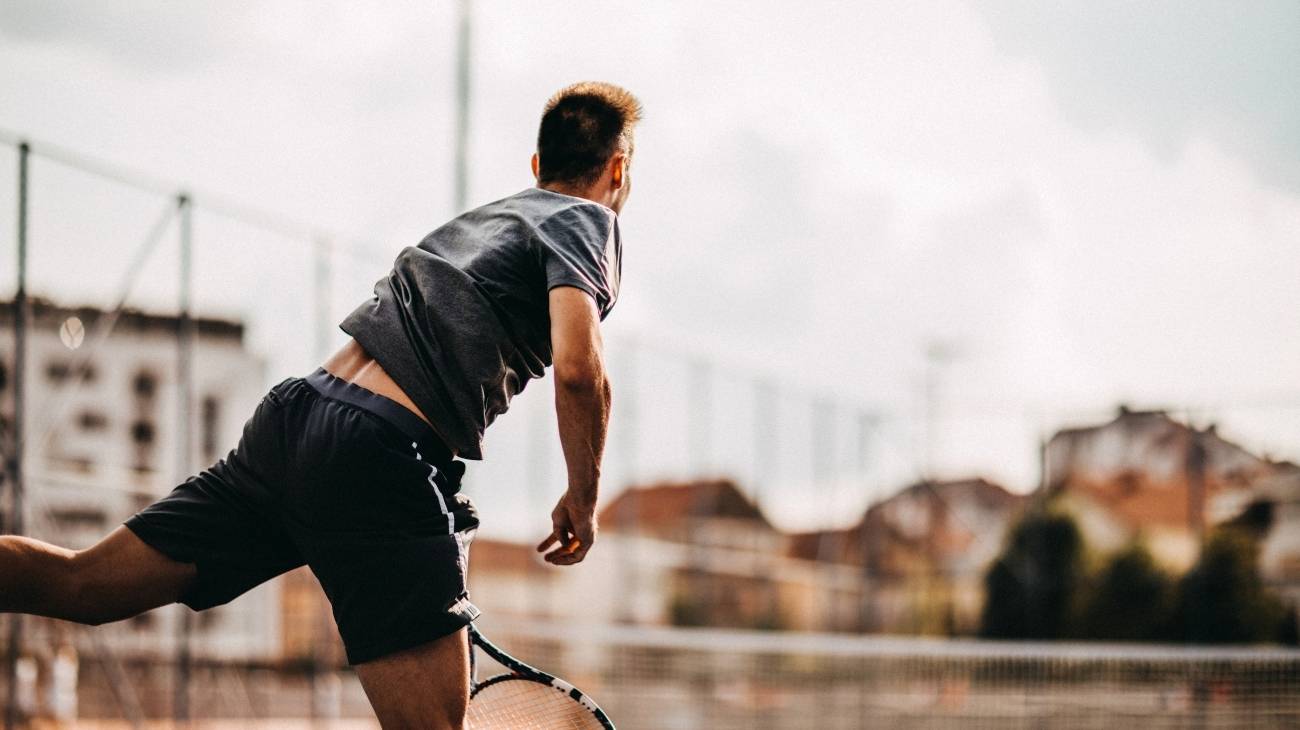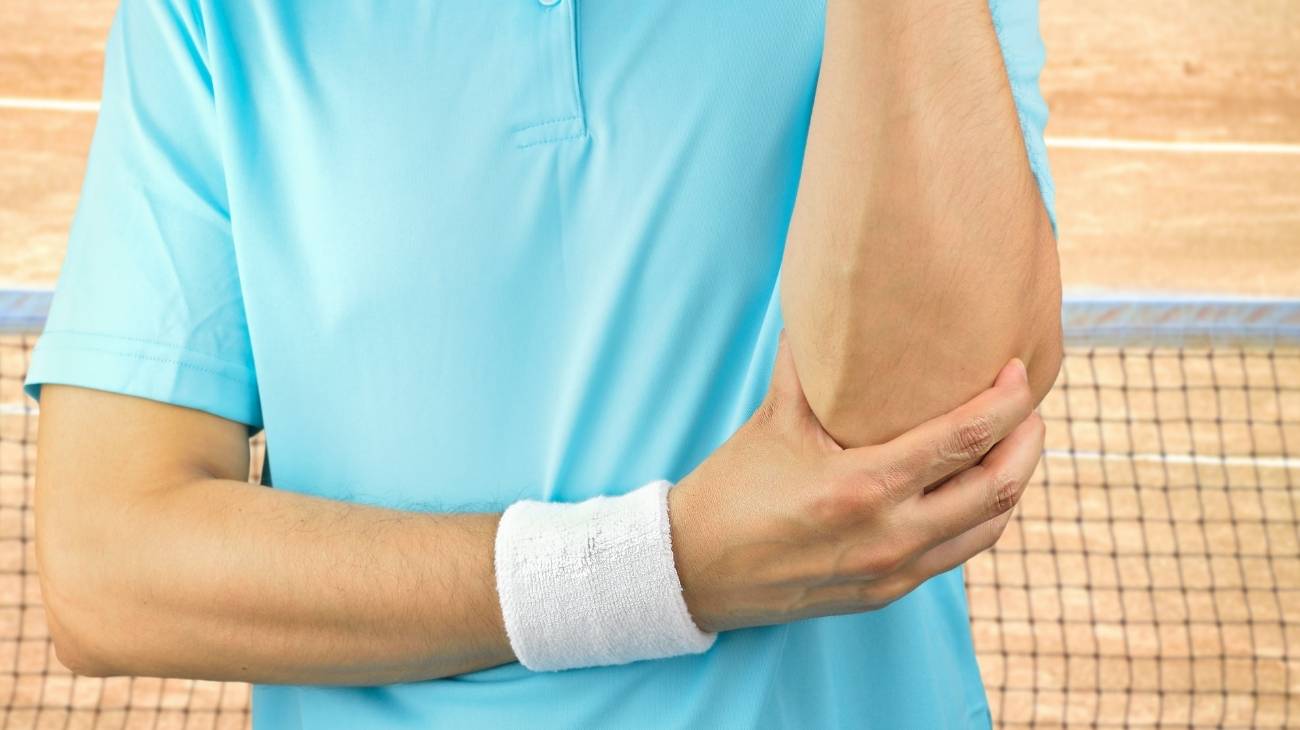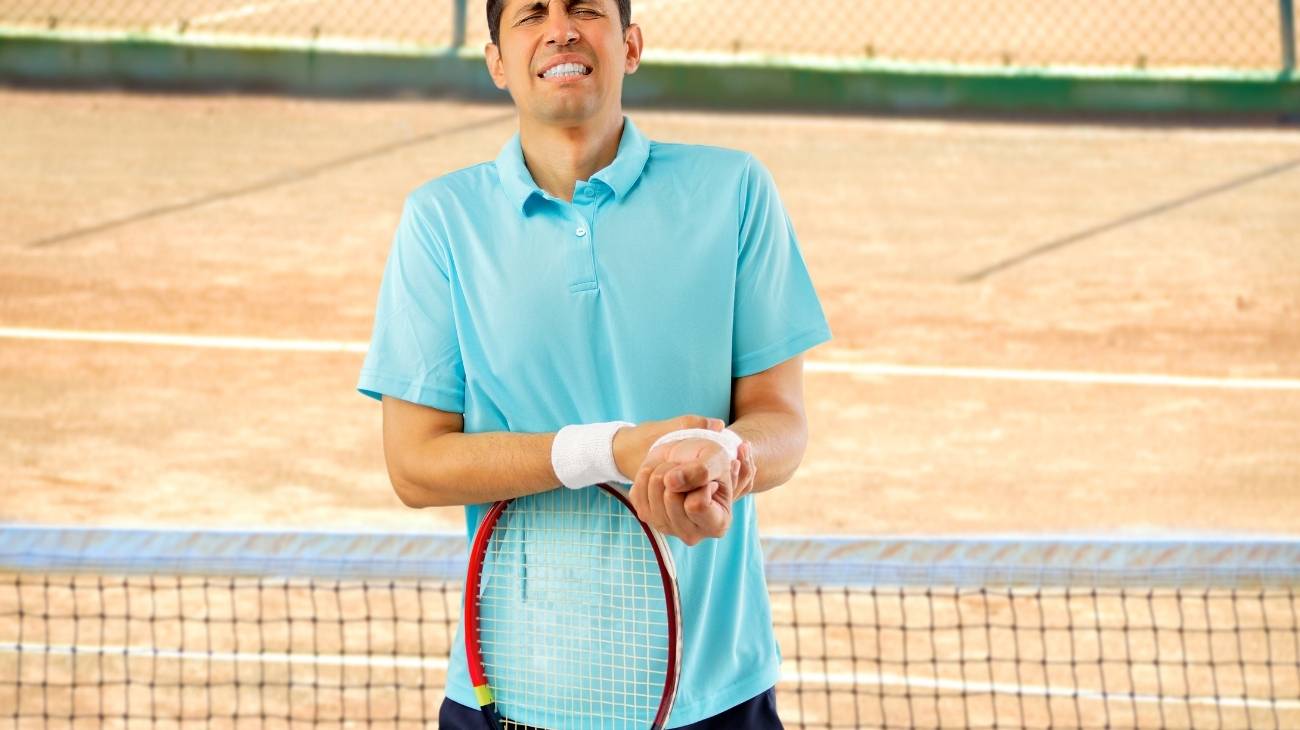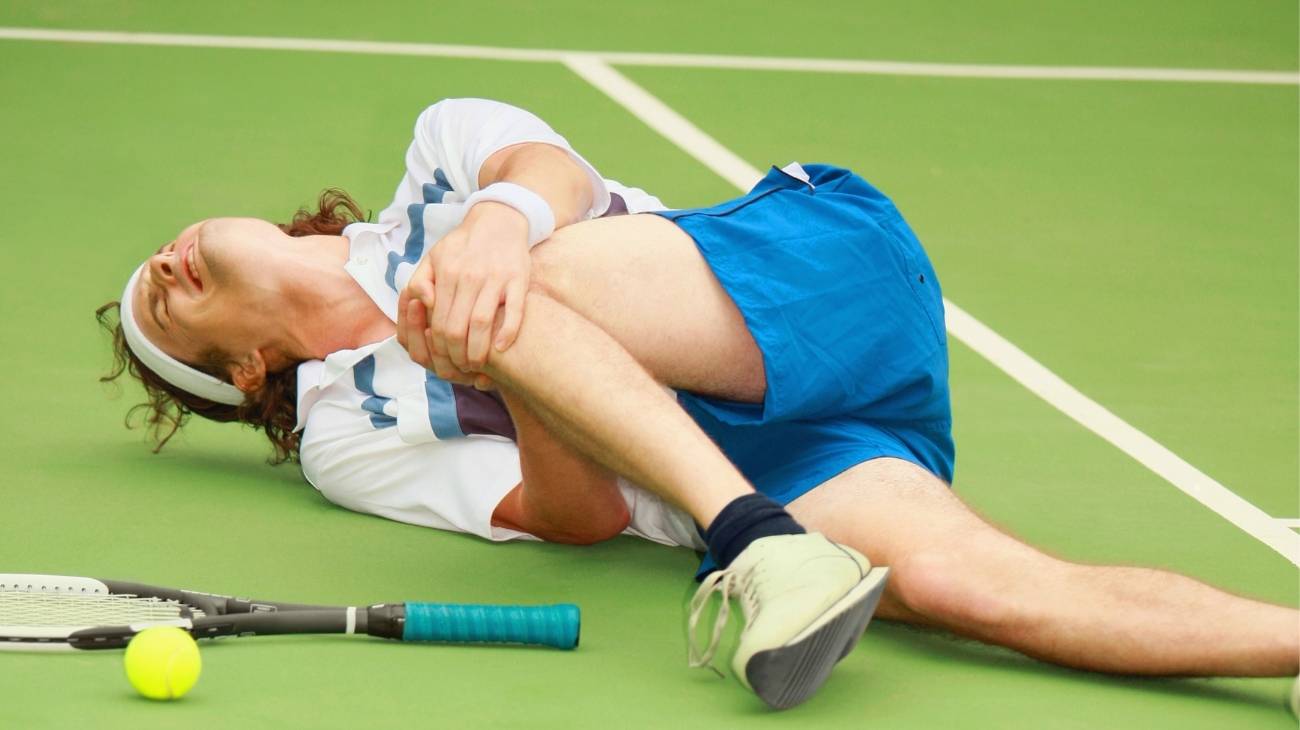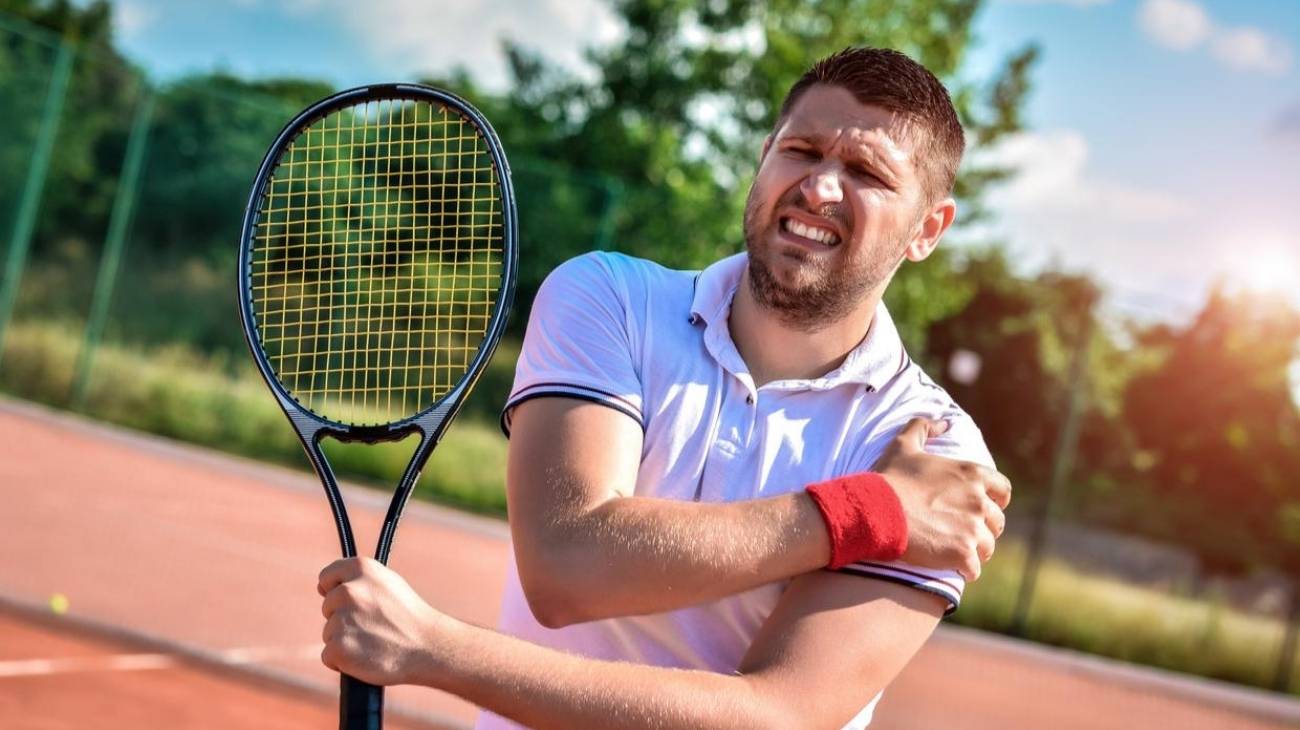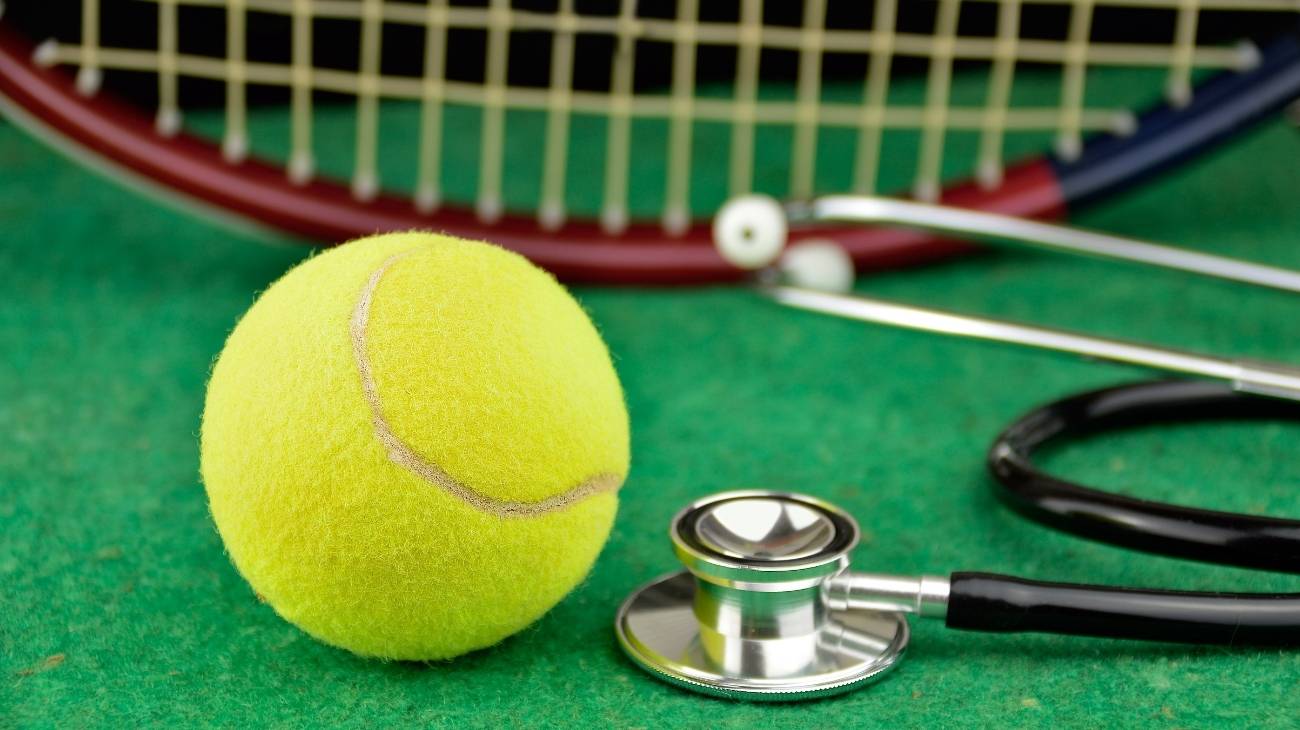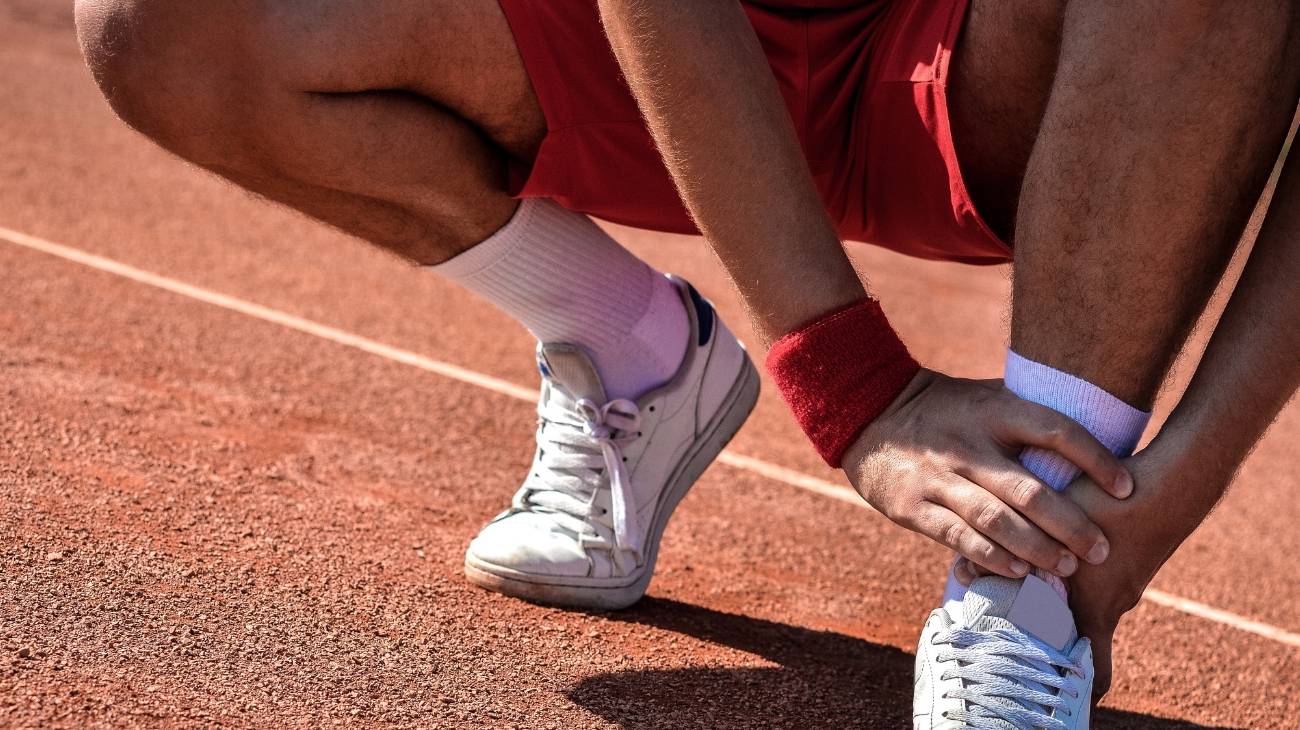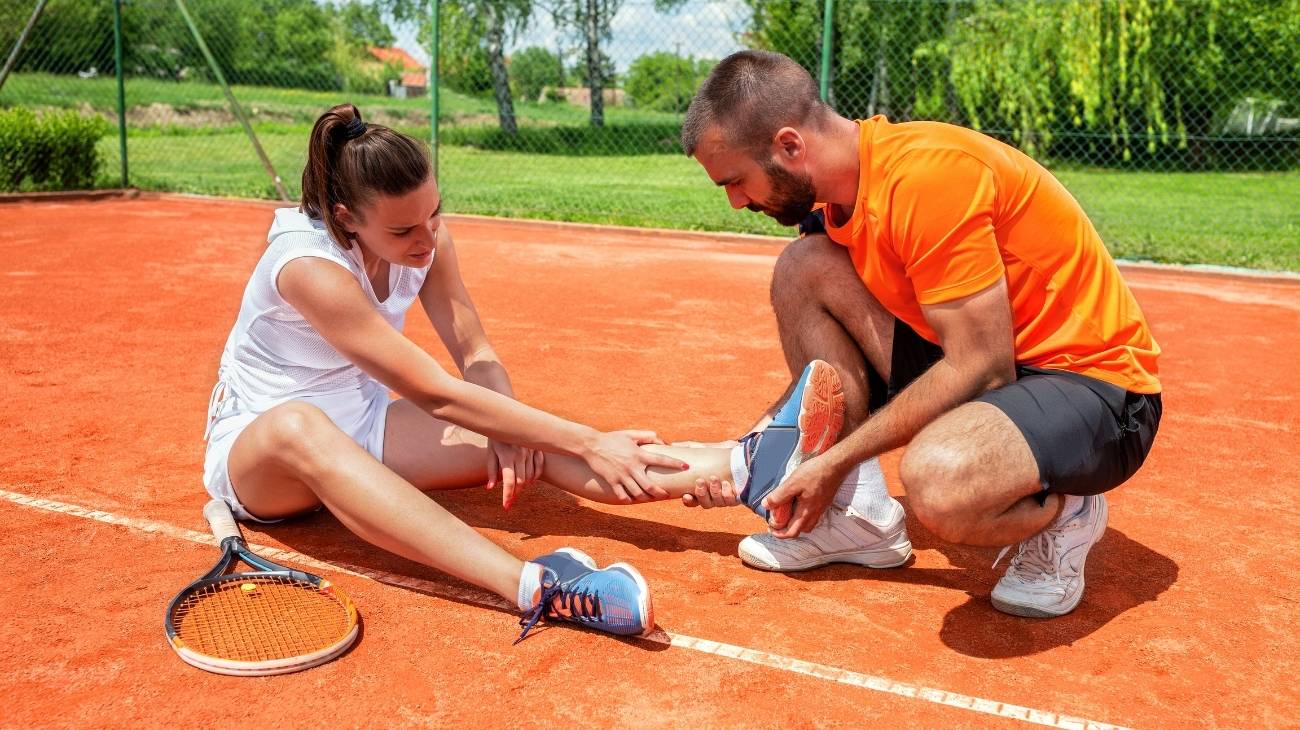Playing tennis is a sporting activity that brings many health benefits as well as fun. However, regardless of whether you are a top player or a fan of this sport, this sport requires you to take care of a series of preventive requirements to avoid sports injuries.
For this reason, today we want to talk to you about the prevention of sports injuries in tennis, so that you can make use of these good sports, food and hygiene practices that are essential to avoid injuries.
What are the most common types of injuries when we play tennis?
If you are a tennis fan or a top athlete, you should know the most common injuries that are generated by this sport and how to prevent them. Bad playing practices, training intensity, ball speed according to the materials it has been manufactured with, intensity of competitions, among others, are among the main reasons for an increase in injuries.
In general, this type of injury occurs more frequently and for different reasons in amateurs, beginners, youngsters in high competition, professionals and veterans.
Next, we will talk to you about the most frequent ones:
- Shoulder injuries: When playing tennis, the shoulder is the joint that suffers most. Therefore, a sudden acceleration or extreme abduction or rotation movements could generate injuries. These generally occur during service movements or shots during a match. Above all, by keeping the arm raised at the same time as making an external rotation to reach the ball, hitting with maximum power or moving with great amplitude.
- Elbow injuries: The most common elbow injury in tennis players is lateral epicondylitis or tennis elbow. This is a condition resulting from excessive use in racket sports by repeating the same movements over and over again. This generates progressive inflammation in the tendons attached to the forearm, specifically in the outer area of the elbow. As a result, there will be pain and tenderness.
- Wrist injuries: Wrist injuries in tennis generally occur as a result of chronic repetitive movements. This type of injury affects ligaments, tendons, bones and nerves. Especially in athletes who perform the backhand technique with two hands while spinning when hitting the ball.
- Back injuries: As we know, the back is the part of the body that is most stressed during a tennis match. Each shot requires constant flexions, rotations and extensions that generate great suffering to the lumbar area. Without a doubt, all this over-exertion generates back injuries.
- Hip injuries: Playing tennis requires bending and flexing the hip considerably, increasing the risk of suffering hip injuries. This is especially true for top athletes who play very frequently and intensively.
- Knee injuries: The physical demands of playing tennis very often lead to knee injuries. As we know, this sport requires turning, braking, jumping, starting, changes of direction, impact and aggressive contact with the ground. Lack of stretching exercises, decreased muscle tone and poor practice during the game are mainly responsible for knee injuries caused by playing tennis.
- Ankle injuries: Sprained ankles are one of the injuries generated by playing tennis as a result of poor lateral movements. These generate twisting, stretching or damage to the ligaments of the ankle, causing pain, swelling and stiffness. Also, it is possible that it causes ankle fractures as a result of the high impact of this sport.
- Foot injuries: Foot injuries from playing tennis are usually generated by stepping on the ball, tripping, excessive twisting or sudden changes of direction. As a result, grade 3 ruptures, Achilles tendonitis or plantar fasciitis can be generated.
- Muscular injuries: Muscular tears in the lower limb are among the most common muscular injuries in tennis. Mainly in the inner calves, as a result of very rapid and sudden movement, especially when there has been no warm-up.
- Bone oedema or stress fractures: After accelerating the pace during tennis, the muscles become tired, as the bone is subjected to excessive stress. As a consequence, bone oedemas, breaks or fissures are generated, causing great acute pain.
Best products for tennis injury recovery
Bestseller
-
2 Ankle Compression Sleeve (Black/Gray)
£17,50 -
2 Ankle Compression Sleeve (Green/Navy)
£17,50 -
2 Ankle Compression Sleeve (Pink/Bordeaux)
£17,50 -
2 Elbow Compression Sleeve (Black/Gray)
£17,50 -
2 Elbow Compression Sleeve (Green/Navy)
£17,50 -
2 Elbow Compression Sleeve (Pink/Bordeaux)
£17,50 -
2 Knee Compression Sleeve (Black/Gray)
£17,50 -
2 Knee Compression Sleeve (Green/Navy)
£17,50 -
2 Knee Compression Sleeve (Pink/Bordeaux)
£17,50 -
2 Patella Knee Strap (Black/Gray)
£12,95 -
2 Patella Knee Strap (Green/Navy)
£12,95 -
2 Patella Knee Strap (Pink/Bordeaux)
£12,95 -
2 Tennis Elbow Brace (Black/Gray)
£12,95 -
2 Tennis Elbow Brace (Green/Navy)
£12,95 -
2 Tennis Elbow Brace (Pink/Bordeaux)
£12,95 -
Acupressure Mat and Pillow (Black/Gray)
£44,95 -
Acupressure Mat and Pillow (Green/Navy)
£44,95 -
Acupressure Mat and Pillow (Pink/Bordeaux)
£44,95 -
Acupressure Pillow (Black/Gray)
£21,52 -
Acupressure Pillow (Green/Navy)
£21,52 -
Acupressure Pillow (Pink/Bordeaux)
£21,52 -
Back Support Belt (Black)
£29,95 -
Back Support Belt (Green)
£29,95 -
Back Support Belt (Pink)
£29,95 -
Foot Massage Roller for Plantar Fasciitis (Black)
£17,50 -
Foot Massage Roller for Plantar Fasciitis (Green)
£17,50 -
Foot Massage Roller for Plantar Fasciitis (Pink)
£17,50 -
High Density Foam Roller for Muscle (Black/Gray)
£21,95 -
High Density Foam Roller for Muscle (Green/Navy)
£21,95 -
High Density Foam Roller for Muscle (Pink/Bordeaux)
£21,95 -
Ice Massage Roller Ball (Black)
£34,95 -
Ice Massage Roller Ball (Green)
£34,95 -
Ice Massage Roller Ball (Pink)
£34,95 -
Microwave Wheat Bag for Neck & Shoulder Pain Relief (Hearts)
£21,50 -
Microwave Wheat Bag for Neck & Shoulder Pain Relief (Oxford)
£21,50 -
Microwave Wheat Bag for Neck & Shoulder Pain Relief (Sport)
£21,50 -
Pack 2 in 1: Foam Roller High + Soft Density (Black/Gray)
£24,95 -
Pack 2 in 1: Foam Roller High + Soft Density (Green/Navy)
£24,95 -
Pack 2 in 1: Foam Roller High + Soft Density (Pink/Bordeaux)
£24,95 -
Shoulder Support Brace (Black)
£21,95 -
Shoulder Support Brace (Green)
£21,95 -
Shoulder Support Brace (Pink)
£21,95 -
Soft Density Foam Roller for Recovery (Black)
£24,95 -
Soft Density Foam Roller for Recovery (Green)
£24,95 -
Soft Density Foam Roller for Recovery (Pink)
£24,95 -
Trigger Point Massage Stick (Black)
£12,95 -
Trigger Point Massage Stick (Green)
£12,95 -
Trigger Point Massage Stick (Pink)
£12,95 -
Wrist Brace (Black/Gray)
£17,50 -
Wrist Brace (Green/Navy)
£17,50 -
Wrist Brace (Pink/Bordeaux)
£17,50
List of injury prevention methods for tennis players
Practicing any sport requires considering a series of good rules or requirements, also called primary prevention. No matter if you are a fan of this sport or a top athlete, putting into practice injury prevention methods on tennis players is essential to obtain the expected result without leading to injuries.
Below, we will tell you which are the most commonly used prevention measures in tennis. Let's see:
Warming up well
A good sports warm-up is essential to avoid injuries from playing tennis, even when it is a game for fun. If you want to prevent injuries from playing tennis, you should perform a series of gentle, progressive exercises that will work your muscles, joints and tendons. In this way, these will reach the right temperature and set in motion the metabolic pathways that guarantee excellent performance.
The warm-up should last about 15 minutes, although this will depend largely on the duration and intensity of the activity to be performed. You can start with a gentle jog to start with the body muscles, which can inter increase in intensity to optimise performance.
Then, you should perform resistance exercises such as running, jumping rope, lifting weights, among others. This, with the aim of working on cardiovascular and pulmonary resistance. Finally, gentle stretching will promote flexibility, working the muscles of the neck, up to the ankles and feet.
Finish your workout with a cool down
After training, a progressive decrease of the exercise should be done through cooling. This process is essential to avoid dizziness or syncope, caused by the sudden stop of intense exercise, stagnating the blood in the dilated veins.
Thanks to stretching, an increase in circulation can be maintained, eliminating lactic acid from the circulatory system. The ideal time is approximately 15 minutes after sport. It should begin with a gentle walk and stretching of the muscles.
During this walk it is recommended to raise the shoulders and arms above the head, helping the blood accumulated in the muscles to move. Also, you should combine stretching and rotating in trunk, legs and feet to avoid stiffness and muscle numbness.
Good nutrition and hydration
Eating and drinking enough water properly is an essential part of the healthy habits required to play tennis. Especially if you are looking for maximum sporting performance and excellent health.
Having good hydration and nutrition prevents sports injuries in tennis. Take a look at the following recommendations:
- Before training you should eat the ideal amount of carbohydrates (30-60 g per kilogram of body weight), 2 or 3 hours before.
- During the match, 7-10 grams per kilogram of body weight should be eaten, combined with isotonic drinks, fruit and sports bars.
- After the match a hydration schedule should be maintained during the first hour with sodium-based drinks, carbohydrates and hydrolysed protein. Afterwards, a meal rich in carbohydrates with a protein element should be eaten.
- In general, you should eat 5 meals a day, with breakfast being the most important. As a recommendation, you should eat 1-2 hours before sport and include carbohydrates.
- Do not wait until you are thirsty. You should hydrate yourself during the day with 2.5 litres of water, before, during and after sport and in a controlled way. You can also combine isotonic drinks with suitable electrolytes.
- Eat enough fruit, vegetables and cereals.
- Add moderate fats to your diet, preferably of vegetable origin or olive oil.
- Enjoy natural flavours with a minimum of salt.
- Enjoy each meal with peace of mind, chewing your food very well.
- Never practise sport on an empty stomach and respect the digestion time, equal to or greater than 2 hours. In this way, you will avoid dizziness, fatigue or lipotimias.
- Avoid drinking alcohol.
Improve your physical condition
Being in optimum physical condition is essential for those who play tennis, as it is a highly demanding sport at a physical level. However, this sport does not require tennis players to have equal anthropometric measurements. Although an ideal height of 185 centimetres has been established, the most important thing will be the technique and gestures of each tennis player.
Achieving a better physical condition for playing tennis requires physical preparation that develops the upper and lower limbs. The main objective must be to optimize speed, ability to react quickly and make changes in speed and direction. Without forgetting neuromuscular coordination.
Sports massage
Including sports massage in the training and planning routine is one of the best practices for tennis players to prevent injuries. Maintenance sports massage should be done once a week, although in disciplined tennis players it may be distanced in sessions of every 15 days.
Before a competition or intense training, it is recommended to perform them 24 hours before. This prepares the muscles for the effort they will have to make by increasing the temperature and stimulating the muscles.
After the competition or intense training, a sports massage is recommended to relax the muscles. These should be combined with stretching the whole body, especially those muscle groups that have been used in the activity.
Use of hot/cold therapies
Cold/hot therapies or contrast therapies are indicated as a very useful measure to avoid sports injuries. Combining these two temperatures will bring the benefits of both treatments. The cold will help in the reduction of pain with an inflammatory effect at the beginning of the injury, while the heat will improve the metabolism, increase circulation and facilitate muscular relaxation.
Generally, hot and cold water contrast baths are indicated intermittently to achieve reabsorption of the oedema. The times for each session will depend on the type of injury and part of the body.
Use of compression clothing
Compression therapy using compression clothing (T-shirts, stockings, socks, among others), serves to protect, support, compress and stabilize the areas of the body of greatest impact. They are ideal for playing tennis or for daily use as a sports injury prevention and rehabilitation measure.
These clothes have an efficient vasoconstrictive action that allows the compression of the blood vessels so that more blood and oxygen reaches the muscle. In this way, it removes as much waste material as possible to improve performance and reduce fatigue. Also, as a support effect on muscles and tendons that helps prevent injuries.
Use of acupressure therapies
Acupressure therapies are natural therapies applied to prevent injuries in tennis. This practice involves the manipulation of the athlete through the hands using thumbs, fingers and palms. All this, while applying pressure on various parts of the body to relax the muscles and joints as a preventive measure to avoid injuries.
Also, as recovery therapies for pain and discomfort resulting from a sports injury, relief of chronic pain and improvement of sleep. This is made possible by the stimulating effect of this therapy on the circulatory, lymphatic and hormonal systems.
Use of thermotherapy and cryotherapy
Cold therapies or cryotherapy for therapeutic purposes offer excellent effects on a physiological level. In the circulatory system it helps to lower blood pressure, metabolism and heart rate. While in the muscular system it offers an analgesic effect against pain, it decreases muscle tone and improves spasticity. However, the cold should be applied within the first 3 days of the injury, especially indicated in acute inflammatory processes, trauma or contusions.
Thermotherapy or heat therapy acts on the neuromuscular apparatus, generating a sedative and analgesic effect. This is why it is especially indicated in cases of chronic pathologies, prolonged muscular injuries, tendonitis, among other injuries that have passed their inflammatory phase. For the prevention of injuries, heat is indicated before intense exercise sessions or competitions to prepare the tissues. This will make them more flexible.
Use of good equipment
Having the equipment is also part of preventing sports injuries in tennis. That's why it's important to choose the right racket, excellent footwear and dress with the right materials. These should be in accordance with the tennis player's playing style and physical ability. For example, a poor choice of racket could cause an elbow or wrist injury. The same goes for the shoes, as they must be able to absorb the impact of the heel to stabilize the foot and ankle.
In this way, avoid muscular overload or Achilles tendon. The right clothing will help to improve performance and avoid injury. In case it is winter, you should avoid playing with cold muscles. In the summer you should wear breathable clothing that allows sweat to evaporate. Also, it is recommended that you wear white clothes when there is heat and a lot of exposure to the sun's rays.
References
- Kibler, W. B., & Safran, M. (2005). Tennis injuries. Epidemiology of Pediatric Sports Injuries: Individual Sports, 48, 120-137. https://www.karger.com/Article/Abstract/84285
- Pluim, B. M., Staal, J. B., Windler, G. E., & Jayanthi, N. (2006). Tennis injuries: occurrence, aetiology, and prevention. British journal of sports medicine, 40(5), 415-423. https://bjsm.bmj.com/content/40/5/415.short
- Dines, J. S., Bedi, A., Williams, P. N., Dodson, C. C., Ellenbecker, T. S., Altchek, D. W., ... & Dines, D. M. (2015). Tennis injuries: epidemiology, pathophysiology, and treatment. JAAOS-Journal of the American Academy of Orthopaedic Surgeons, 23(3), 181-189. https://journals.lww.com/jaaos/Fulltext/2015/03000/Tennis_Injuries__Epidemiology,_Pathophysiology,.6.aspx
- Nigg, B. M., & Segesser, B. (1988). The influence of playing surfaces on the load on the locomotor system and on football and tennis injuries. Sports medicine, 5, 375-385. https://link.springer.com/article/10.2165/00007256-198805060-00003
- Bylak, J., & Hutchinson, M. R. (1998). Common sports injuries in young tennis players. Sports medicine, 26, 119-132. https://link.springer.com/article/10.2165/00007256-199826020-00005
- Abrams, G. D., Renstrom, P. A., & Safran, M. R. (2012). Epidemiology of musculoskeletal injury in the tennis player. British journal of sports medicine, 46(7), 492-498. https://bjsm.bmj.com/content/46/7/492.short
- Chandler, T. J. (1995). Exercise training for tennis. Clinics in sports medicine, 14(1), 33-46. https://europepmc.org/article/med/7712556
- Nirschl, R. P. (1988). Prevention and treatment of elbow and shoulder injuries in the tennis player. Clinics in Sports Medicine, 7(2), 289-308. https://www.sciencedirect.com/science/article/abs/pii/S0278591920309364
- Eygendaal, D., Rahussen, F. T. G., & Diercks, R. L. (2007). Biomechanics of the elbow joint in tennis players and relation to pathology. British journal of sports medicine, 41(11), 820-823. https://bjsm.bmj.com/content/41/11/820.short
- Perkins, R. H., & Davis, D. (2006). Musculoskeletal injuries in tennis. Physical Medicine and Rehabilitation Clinics, 17(3), 609-631. https://www.pmr.theclinics.com/article/S1047-9651(06)00031-3/fulltext

